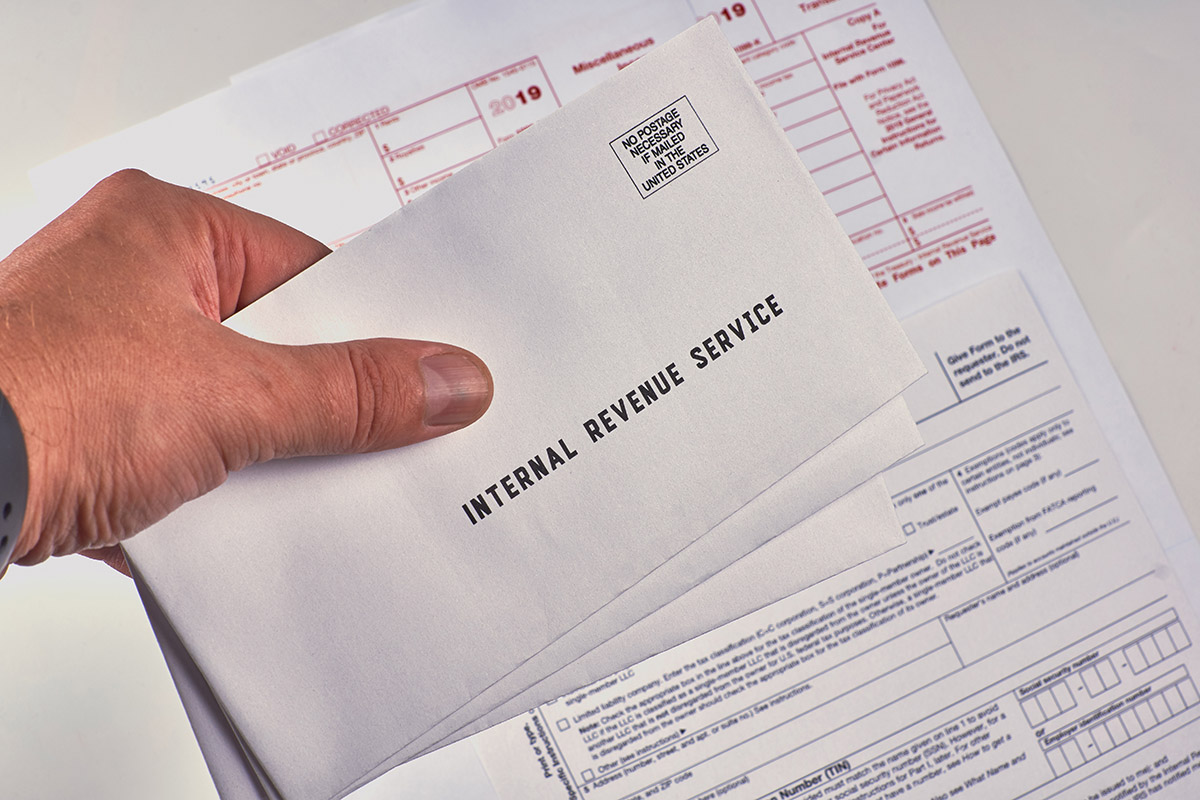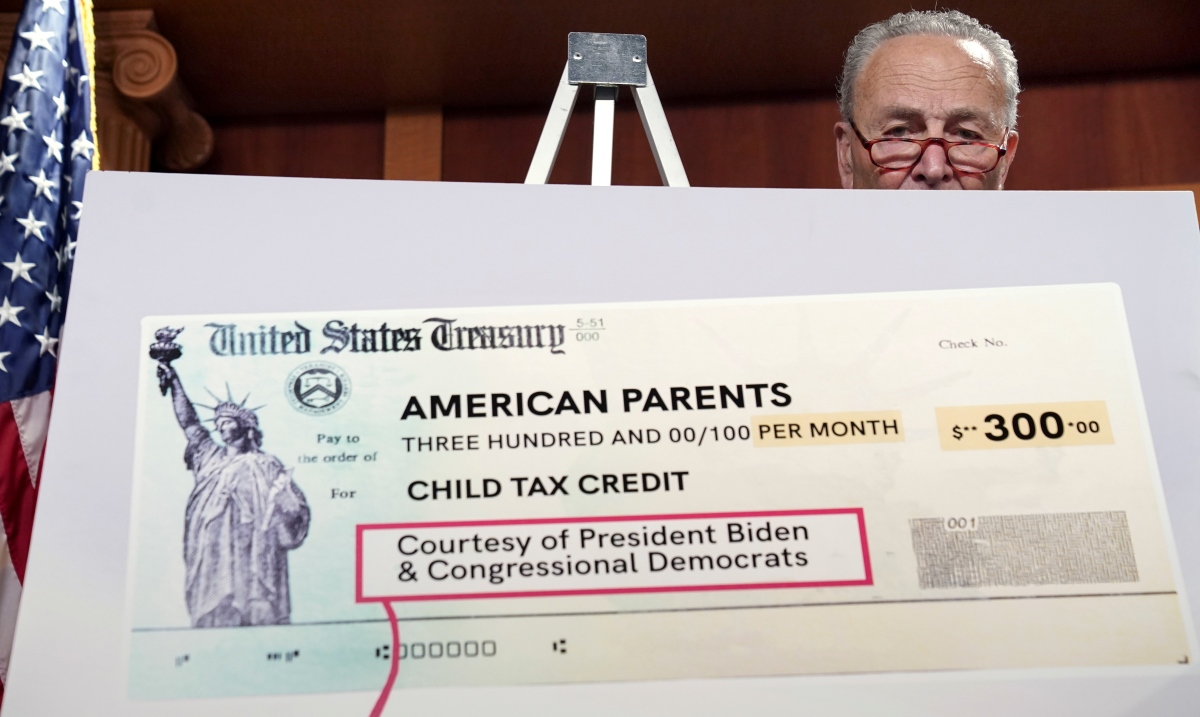

Finance
How To Donate To Goodwill For Tax Deductions
Published: January 20, 2024
Learn how to donate to Goodwill and maximize your tax deductions. Discover financial tips to make the most of your goodwill donations.
(Many of the links in this article redirect to a specific reviewed product. Your purchase of these products through affiliate links helps to generate commission for LiveWell, at no extra cost. Learn more)
Table of Contents
- Introduction
- Understanding Goodwill
- Benefits of Donating to Goodwill for Tax Deductions
- Eligibility for Tax Deductions
- Guidelines for Donating to Goodwill
- Collecting and Documenting Donation Receipts
- Calculating the Value of Donated Items
- Completing Tax Forms for Goodwill Donations
- Tips for Maximizing Tax Deductions
- Frequently Asked Questions (FAQs)
- Conclusion
Introduction
Welcome to our comprehensive guide on how to donate to Goodwill for tax deductions. Donating to Goodwill not only helps support their mission of assisting individuals with barriers to employment, but it can also provide you with potential tax benefits. By making charitable contributions to Goodwill, you can make a positive impact in your community while potentially reducing your taxable income.
Goodwill is a renowned nonprofit organization that operates in various communities across the United States and around the world. They focus on providing job training, employment placement services, and other community-based programs to individuals facing challenges in securing and retaining employment. Through their thrift stores, Goodwill sells donated items to support their programs and initiatives.
When you donate to Goodwill, you contribute to a sustainable cycle of social impact. Your donations not only provide funding for education, job training, and other important programs, but they also give new life to pre-owned items by making them available for resale at affordable prices.
One of the additional benefits of donating to Goodwill is the potential tax deductions that you may be eligible for. The Internal Revenue Service (IRS) allows taxpayers to claim deductions on their charitable donations, including those made to qualified organizations like Goodwill.
In this guide, we will walk you through the process of donating to Goodwill and taking advantage of tax deductions. We will explain the eligibility requirements, guidelines for donating, and the necessary steps to document and report your contributions accurately. Whether you have a few items or a significant donation, this guide will help you maximize the benefits of your generous contribution.
Before getting into the details, please note that tax laws and regulations can change, and it’s important to consult a tax professional or refer to the official IRS guidelines for the most up-to-date information. Now, let’s dive into the world of Goodwill donations and tax deductions!
Understanding Goodwill
Goodwill is a well-established nonprofit organization that operates on a global scale. Founded in 1902, Goodwill aims to enhance the dignity and quality of life for individuals in need by providing them with opportunities for education, training, and employment.
The organization is best known for its thrift stores, which serve as a crucial revenue source to fund various programs and services. These thrift stores accept donations of gently used clothing, furniture, household items, and other goods. Goodwill then resells these items at affordable prices, generating revenue to support their mission.
In addition to thrift stores, Goodwill provides a wide range of services to assist individuals in overcoming employment barriers. These services include career counseling, job training, resume building, interview preparation, and job placement assistance. Goodwill focuses on empowering individuals and helping them gain the necessary skills and confidence to achieve long-term employment success.
Goodwill’s programs are designed to support people facing various challenges, including individuals with disabilities, veterans, the elderly, and those who have been previously incarcerated or have limited job opportunities. By offering a comprehensive range of services, Goodwill aims to foster self-sufficiency and improve the economic well-being of individuals and their families.
Goodwill also collaborates with businesses and community organizations to create innovative partnerships that facilitate employment opportunities for their program participants. These partnerships help bridge the gap between job seekers and employers, creating a symbiotic relationship that benefits both parties.
With a presence in over 160 territories and countries worldwide, Goodwill has a significant impact on local communities. Their initiatives not only help individuals secure stable employment but also contribute to the overall economic growth and the reduction of poverty rates.
As a donor to Goodwill, you play a crucial role in supporting their mission. By giving your gently used items, you are directly contributing to the success stories of countless individuals who are striving for a better future. Moreover, your donations have an environmental impact as they promote recycling and reduce waste.
Now that you have a better understanding of Goodwill and their mission, let’s explore the potential tax benefits that donating to Goodwill can provide.
Benefits of Donating to Goodwill for Tax Deductions
Donating to Goodwill goes beyond the act of philanthropy. It can also provide you with potential tax benefits that can help reduce your taxable income. Here are the key advantages of donating to Goodwill for tax deductions:
- Tax Deductions: When you make a charitable contribution to Goodwill, you may be eligible to claim a deduction on your federal income tax return. This deduction allows you to reduce your taxable income, potentially resulting in lower tax liability. It’s essential to keep accurate records and follow the IRS guidelines to ensure compliance with the deduction rules.
- Supporting a Charitable Cause: By donating to Goodwill, your contributions help support their mission of providing job opportunities and services to individuals in need. Your donations directly impact the lives of people facing employment barriers, allowing them to gain valuable skills, find meaningful employment, and improve their quality of life.
- Environmental Impact: Donating to Goodwill promotes sustainability by giving a second life to pre-owned items. When you donate your gently used clothing, furniture, and household items, you help reduce waste and contribute to the recycling and upcycling process. This environmental benefit aligns with Goodwill’s commitment to sustainability practices.
- Receive a Receipt: When you donate to Goodwill, you’ll receive a donation receipt that serves as documentation for your contribution. This receipt not only helps you substantiate your donation for tax purposes but also provides proof of your generosity and support for the Goodwill mission.
- Potential Non-Cash Charitable Contributions: In addition to cash donations, Goodwill also accepts non-cash items such as clothing, furniture, electronics, and more. The value of these non-cash contributions can also be deducted from your taxable income. It’s crucial to consult the IRS guidelines or a tax professional to determine the acceptable valuation methods for non-cash donations.
Donating to Goodwill is a win-win situation. You not only contribute to a worthy cause but may also benefit financially by reducing your tax burden. Before proceeding with your donations, it’s important to familiarize yourself with the eligibility requirements for tax deductions, the guidelines for donating to Goodwill, and the documentation process. The next section will provide you with details on the qualifications for tax deductions when donating to Goodwill.
Eligibility for Tax Deductions
To claim tax deductions for your donations to Goodwill, you must meet certain eligibility requirements set by the Internal Revenue Service (IRS). Here are the key factors to consider:
- 501(c)(3) Organization: Goodwill is a qualified 501(c)(3) nonprofit organization, which means that donations made to them are generally eligible for tax deductions. However, it’s important to verify the tax-exempt status of the specific Goodwill organization you are donating to, as there may be variations depending on the region or location.
- Itemized Deductions: To claim tax deductions for your donations, you must itemize your deductions on Schedule A of your federal tax return. Itemizing deductions requires more effort than taking the standard deduction, but it can potentially result in greater tax savings if your eligible deductions exceed the standard deduction amount.
- Documentation: Proper documentation is crucial when claiming deductions for your Goodwill donations. You must obtain a receipt from Goodwill that includes the organization’s name, the date of the contribution, a description of the donated items, and an estimated fair market value. For donations valued at $250 or more, you will also need a written acknowledgment from Goodwill specifying whether you received any goods or services in exchange for your donation.
- Timing of Donations: Donations must be made within the tax year you are claiming the deductions. Keep in mind that the IRS requires donations to be completed by December 31st to be eligible for that tax year’s deductions.
- Qualified Expenses: Not all expenses are eligible for tax deductions. The IRS allows deductions for donations of money, property, or goods that are in good condition or better. Additionally, the expenses must be unreimbursed and directly related to Goodwill’s charitable activities.
- Appraisal Requirements: In some cases, when donating high-value items, such as artwork, jewelry, or collectibles, an appraisal may be required to determine their fair market value. This is particularly important for donations exceeding $5,000, as additional IRS requirements come into play.
It’s important to keep in mind that tax laws can change, and it’s always prudent to consult a tax professional or refer to the official IRS guidelines to ensure compliance with current regulations. By meeting the eligibility requirements, documenting your donations accurately, and itemizing your deductions, you can benefit from the potential tax deductions associated with your Goodwill contributions.
In the next section, we will provide you with guidelines for donating to Goodwill and ensuring that your contributions are eligible for tax deductions.
Guidelines for Donating to Goodwill
When donating to Goodwill, it’s important to follow certain guidelines to ensure that your contributions are accepted and eligible for tax deductions. Here are some key guidelines to keep in mind:
- Donate Gently Used Items: Goodwill accepts donations of clothing, furniture, household items, electronics, and more. It’s important to donate items that are in good condition or better. Ensure that the items are clean, working (if applicable), and free from significant damage or wear.
- Check Acceptance Policies: While Goodwill accepts a wide range of items, it is always a good idea to check their specific acceptance policies. Some Goodwill locations may have restrictions on certain items due to space limitations, safety concerns, or local regulations.
- Consider Local Needs: Goodwill operates in various communities, and the needs of each location may differ. Take some time to research the specific needs of your local Goodwill branch. Check if they have any specific requests or if they are currently running specific programs that require certain types of donations.
- Donate Seasonal Items: Goodwill often experiences a higher demand for seasonal items such as winter coats, holiday decorations, or outdoor equipment during specific times of the year. Consider donating these items during the appropriate season to provide maximum benefit to those in need.
- Package and Label Donations: Properly package and label your donations to ensure their safety during transportation. Use sturdy boxes or containers and secure them tightly. If you have multiple bags or boxes, label them clearly to indicate the contents.
- Consider Monetary Donations: In addition to donating physical items, consider making monetary donations to Goodwill. Cash contributions are always appreciated and can support their essential programs and services. Monetary donations are generally tax-deductible, but consult the IRS guidelines and proper documentation requirements for accurate reporting.
- Donation Drop-Offs and Pick-Ups: Goodwill thrift stores usually have designated areas for drop-off donations. Follow the instructions provided by the staff or consult the Goodwill website for specific information on drop-off locations and hours. If you are unable to drop off your donations, some Goodwill branches may offer pick-up services for larger items. Check with your local Goodwill to inquire about pick-up availability and schedules.
Following these guidelines ensures a smooth and efficient process when donating to Goodwill. By adhering to their policies and considering the specific needs of your local branch, you can make a meaningful contribution that supports Goodwill’s mission while also potentially qualifying for tax deductions.
Next, we will discuss the importance of collecting and documenting donation receipts to ensure proper documentation for your tax deductions.
Collecting and Documenting Donation Receipts
When making donations to Goodwill, it’s crucial to collect and properly document your donation receipts. These receipts serve as essential documentation for claiming tax deductions and substantiating your contributions. Here are some guidelines to follow when it comes to collecting and documenting donation receipts:
- Request a Receipt: When you drop off your donations at a Goodwill location, be sure to request a receipt. The receipt should include the name of the organization, the date of the donation, and a description of the donated items. Some Goodwill branches may provide a printed receipt onsite, while others may offer electronic receipts sent via email.
- Document Multiple Donations: If you make multiple donations throughout the year, it’s important to keep track of each donation separately. Ensure that each receipt clearly states the specific donation details and attach any additional paperwork for large or high-value items, if applicable.
- Record Donation Date and Description: Alongside your receipt, maintain a personal record of each donation. Note the date and provide a detailed description of the donated items. This record will help you easily cross-reference and validate your donations during the tax filing process.
- Estimate the Fair Market Value: Goodwill receipts generally do not assign a value to specific donated items. As a donor, it is your responsibility to estimate the fair market value (FMV) of your donations. Research similar items to gauge their market value or consult online valuation resources, such as thrift store pricing guides or websites that provide value estimates for specific items.
- Keep Supporting Documentation: In addition to your donation receipts, retain any supporting documentation that validates the value of your donated items. This may include purchase receipts, appraisals, or photographs that help substantiate the condition and worth of high-value or unique items.
- Document Non-Cash Contributions over $500: If your non-cash donation to Goodwill exceeds $500, you need to complete IRS Form 8283 (Noncash Charitable Contributions) and submit it with your tax return. This form requires additional information about the donated items, including a qualified appraisal, if necessary.
- Maintain Organized Records: Keep all donation receipts, supporting documents, and personal records organized and easily accessible. This will facilitate the tax filing process and provide peace of mind knowing that you have the necessary documentation to support your claimed deductions.
Remember, proper documentation is essential when claiming tax deductions for your Goodwill donations. Consult the IRS guidelines for charitable contributions (Publication 526) for more details on the requirements and documentation standards. By accurately collecting and documenting your donation receipts, you can confidently claim your eligible tax deductions while supporting the important work of Goodwill.
Next, we will explore how to calculate the value of donated items for tax purposes.
Calculating the Value of Donated Items
When claiming tax deductions for your donated items to Goodwill, it’s important to accurately calculate their value based on their fair market value (FMV). The FMV is the price that the item would sell for in its current condition in the open market. Here are some guidelines for calculating the value of your donated items:
- Condition: Assess the condition of your donated items. Items in good condition or better typically have a higher value. Take into account factors such as cleanliness, functionality, and overall appearance when determining their condition.
- Research: Conduct research to determine the fair market value of your donated items. Look for similar items and their selling prices in online marketplaces, thrift store pricing guides, or other reputable sources. Consider the age, brand, and demand for the item when estimating its value.
- Consider Depreciation: In the case of gently used items, it’s important to factor in depreciation when calculating their value. Depreciation accounts for the wear and tear or reduced value that occurs over time. You can use depreciation tables or guidelines provided by the IRS to estimate the depreciation percentage for your specific item.
- Consult Appraisals (if necessary): For high-value or unique items, consider obtaining a professional appraisal to determine their value accurately. Appraisals are particularly important for items exceeding $5,000, as additional IRS requirements come into play. The cost of the appraisal can also be tax-deductible as a miscellaneous itemized deduction.
- Use Valuation Guides: For common items, you can refer to valuation guides provided by organizations such as the Salvation Army or reputable online resources. These guides offer estimated values for different item categories to help you determine their worth.
- Average Selling Price: If you have sold similar items in the past or are familiar with their selling prices, you can use the average selling price as an estimate of the FMV for your donated item. This approach can be particularly useful for items with a well-established market value.
- Record Detailed Descriptions: Document detailed descriptions of each donated item, noting any unique features, brand names, or distinguishing characteristics. This information will help support your valuation when substantiating your donations.
It’s important to remember that the IRS expects taxpayers to use reasonable judgment when estimating the value of donated items. While there is no definitive formula for calculating FMV, the goal is to provide a fair and accurate representation of the item’s worth in the open market.
Always keep records of your valuation methodology and any supporting documentation, such as online listings or advertisements, in case of an IRS audit. This will help justify your valuation and ensure compliance with tax regulations.
Next, we will discuss the process of completing tax forms for Goodwill donations, which will allow you to properly report your deductions to the IRS.
Completing Tax Forms for Goodwill Donations
When it comes to claiming tax deductions for your Goodwill donations, correctly completing the necessary tax forms is essential. Here’s a step-by-step guide to help you navigate the process:
- Obtain the Correct Forms: To report your donations to Goodwill, you will typically need to use Form 1040, the standard individual income tax return form. If you itemize your deductions, you’ll also need to complete Schedule A, which allows you to list your qualifying deductions, including charitable donations.
- Enter your Personal Information: Fill in your personal information at the top of the tax forms, including your name, address, and Social Security number. Ensure that the information is accurate and up to date.
- Complete Schedule A: On Schedule A, you will find the section dedicated to reporting charitable contributions. Enter the total amount of your charitable donations, including those made to Goodwill, in the appropriate line. Be sure to keep a record of the specific donation amounts and supporting documentation for each donation.
- Include Donation Receipts: Attach your donation receipts from Goodwill to your tax forms. Keeping them organized and easily accessible will help ensure that you have all the necessary documentation in case of an IRS audit.
- Itemize your Deductions: When claiming your Goodwill donations, make sure to itemize your deductions instead of taking the standard deduction. Itemizing allows you to deduct the total amount of your qualifying expenses, including charitable donations, potentially yielding a higher tax savings than the standard deduction amount.
- Calculate your Deductions: Refer to the instructions provided with the tax forms to calculate your deductible amount accurately. The IRS provides guidelines on determining the percentage limitations for charitable contributions based on your adjusted gross income (AGI).
- Provide Additional Information (if applicable): In some cases, such as when donating highly valuable items, additional forms may be required. For donations exceeding $500, Form 8283, Noncash Charitable Contributions, must be completed. If your total noncash contributions exceed $5,000, you’ll also need a qualified appraisal and complete Section B of Form 8283.
- Double-Check Accuracy: Before submitting your tax forms, double-check all the information and calculations to ensure accuracy. Mistakes or omissions could lead to delays in processing your return or potential IRS inquiries.
It’s important to note that this guide provides a general overview, and there may be additional requirements or specific circumstances that could affect your tax filing. Always consult the official IRS guidelines, including Publication 526, Charitable Contributions, and consider seeking the advice of a tax professional to ensure compliance with current tax laws and regulations.
By completing the necessary tax forms accurately and providing the required documentation, you can confidently report your Goodwill donations to the IRS and claim the tax deductions you are entitled to.
In the next section, we will provide you with some valuable tips for maximizing your tax deductions when donating to Goodwill.
Tips for Maximizing Tax Deductions
When donating to Goodwill, there are several strategies you can employ to maximize your tax deductions. Here are some valuable tips to help you make the most of your charitable contributions:
- Keep Detailed Records: Maintain thorough records of your donations to Goodwill. This includes the donation receipts, a list of donated items, their fair market values, and any supporting documentation. Having organized records will help ensure accurate reporting and substantiation of your deductions.
- Donate Cash: Cash contributions to Goodwill can be tax-deductible. Keep track of your cash donations through bank statements, cancelled checks, or donation receipts from the organization. Remember to obtain and retain proper documentation for all monetary contributions.
- Consider Giving Appreciated Assets: If you have appreciated assets, such as stocks or securities, consider donating them directly to Goodwill. By doing so, you can potentially avoid capital gains taxes on the appreciation while claiming a deduction for the full market value of the assets.
- Bunch Your Donations: Bunching donations involves combining several years’ worth of donations into a single tax year. By doing this, you may be able to exceed the standard deduction threshold and maximize your tax savings. Consult a tax professional to determine if this strategy is beneficial for your specific circumstances.
- Donate High-Value Items: If you possess high-value items, such as artwork or collectibles, donating them to Goodwill can result in substantial tax deductions. However, you may need to obtain a professional appraisal to determine their fair market value and comply with IRS requirements.
- Consider Employer Matching Programs: Some employers offer matching gift programs, where they match their employees’ charitable contributions. Check if your employer has such a program in place, as it can effectively double the impact of your donations to Goodwill.
- Consult with a Tax Professional: Tax laws and regulations can be complex and subject to change. Consulting with a tax professional who specializes in charitable donations can ensure that you are taking full advantage of available deductions and complying with current tax guidelines.
- Stay Informed: Keep yourself updated on any changes to tax laws and regulations related to charitable contributions. The IRS provides publications and resources that outline the rules and guidelines for deducting charitable donations. Regularly reviewing these materials can help you maximize your tax deductions.
These tips can help optimize your tax deductions when donating to Goodwill. By implementing these strategies while adhering to proper documentation and reporting practices, you can minimize your tax liability while making a positive impact in your community through your charitable contributions.
In the next section, we will address some commonly asked questions about donating to Goodwill for tax deductions, providing further clarity on this topic.
Frequently Asked Questions (FAQs)
Here are some commonly asked questions about donating to Goodwill for tax deductions:
- Q: Can I claim a tax deduction for my donations to Goodwill?
- Q: What documentation do I need to claim tax deductions for my Goodwill donations?
- Q: How do I determine the value of my donated items?
- Q: What are the limits on tax deductions for charitable contributions?
- Q: What if I donated a non-cash item worth more than $5,000?
- Q: Can I deduct the value of my time or services donated to Goodwill?
- Q: What if I receive something in return for my donation?
- Q: Is there a deadline for making charitable donations to Goodwill?
A: Yes, donations made to Goodwill, as a qualified 501(c)(3) nonprofit organization, are generally eligible for tax deductions.
A: It is essential to obtain and keep your donation receipts from Goodwill, which should include the organization’s name, the date of the donation, and a description of the donated items. For non-cash contributions over $250, you will also need a written acknowledgement from Goodwill.
A: You can determine the value of your donated items by estimating their fair market value (FMV). Consider the item’s condition, research similar items, and consult valuation guides or online resources. For higher-value items, an appraisal may be necessary.
A: The IRS generally allows individuals to deduct up to 60% of their adjusted gross income (AGI) for charitable contributions. There may be limitations for certain types of donations or if you are subject to the Alternative Minimum Tax.
A: If you donated a single non-cash item or a group of similar items collectively valued at more than $5,000, you must obtain a qualified appraisal, complete Section B of IRS Form 8283, and submit it along with your tax return.
A: No, you cannot deduct the value of your time or services volunteered to Goodwill. However, certain out-of-pocket expenses directly related to your volunteer work may be deductible.
A: If you receive goods or services in exchange for your donation, the value of the benefit received may reduce the deductible portion of your contribution. Goodwill typically provides a statement on the donation receipt indicating whether any goods or services were provided.
A: Donations must be made within the tax year you are claiming the deductions. To qualify for a specific tax year, donations must typically be completed by December 31st.
These FAQs address some of the common concerns regarding tax deductions for Goodwill donations. Remember, it’s always advisable to consult a tax professional or refer to the official IRS guidelines for specific and up-to-date information based on your unique situation.
Finally, let’s conclude with a summary of the key points discussed throughout this comprehensive guide on donating to Goodwill for tax deductions.
Conclusion
Donating to Goodwill is not only a generous act that supports their mission of providing job training and employment opportunities to individuals in need, but it can also offer potential tax benefits. By understanding the eligibility requirements, guidelines, and documentation process outlined in this guide, you can make the most of your contributions and ensure that they are eligible for tax deductions.
When donating to Goodwill, remember to keep detailed records of your donations, including the donation receipts and a comprehensive list of the donated items. Estimating the fair market value of your donations accurately will help you maximize your tax deductions while adhering to IRS guidelines. Consider consulting a tax professional to ensure compliance with current tax laws and regulations.
By following the tips provided, such as keeping detailed records, donating appreciated assets, and taking advantage of employer matching programs, you can further enhance your tax deductions and make a substantial impact through your donations to Goodwill.
Remember that the information provided in this guide is intended to serve as a general reference and does not constitute personalized tax advice. Tax laws can change, so it’s important to consult the official IRS guidelines and seek professional advice to ensure that you are in compliance with current regulations.
By donating to Goodwill and harnessing the potential tax benefits, you can contribute to a worthy cause while potentially reducing your tax liability. Your contributions can make a significant difference in the lives of individuals facing employment barriers and help build stronger, more inclusive communities.
Thank you for your generosity and for choosing to make a positive impact through your donations to Goodwill.














